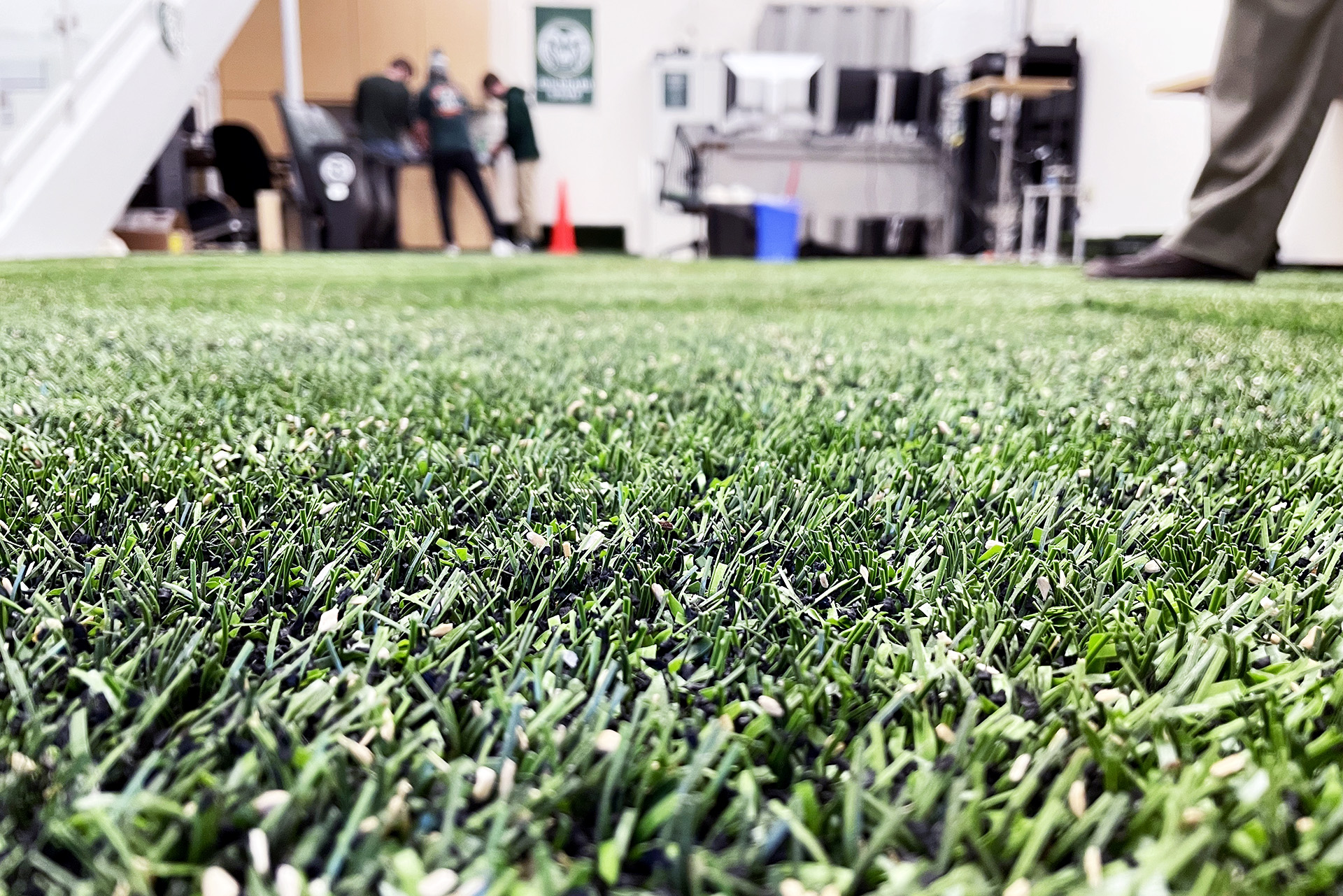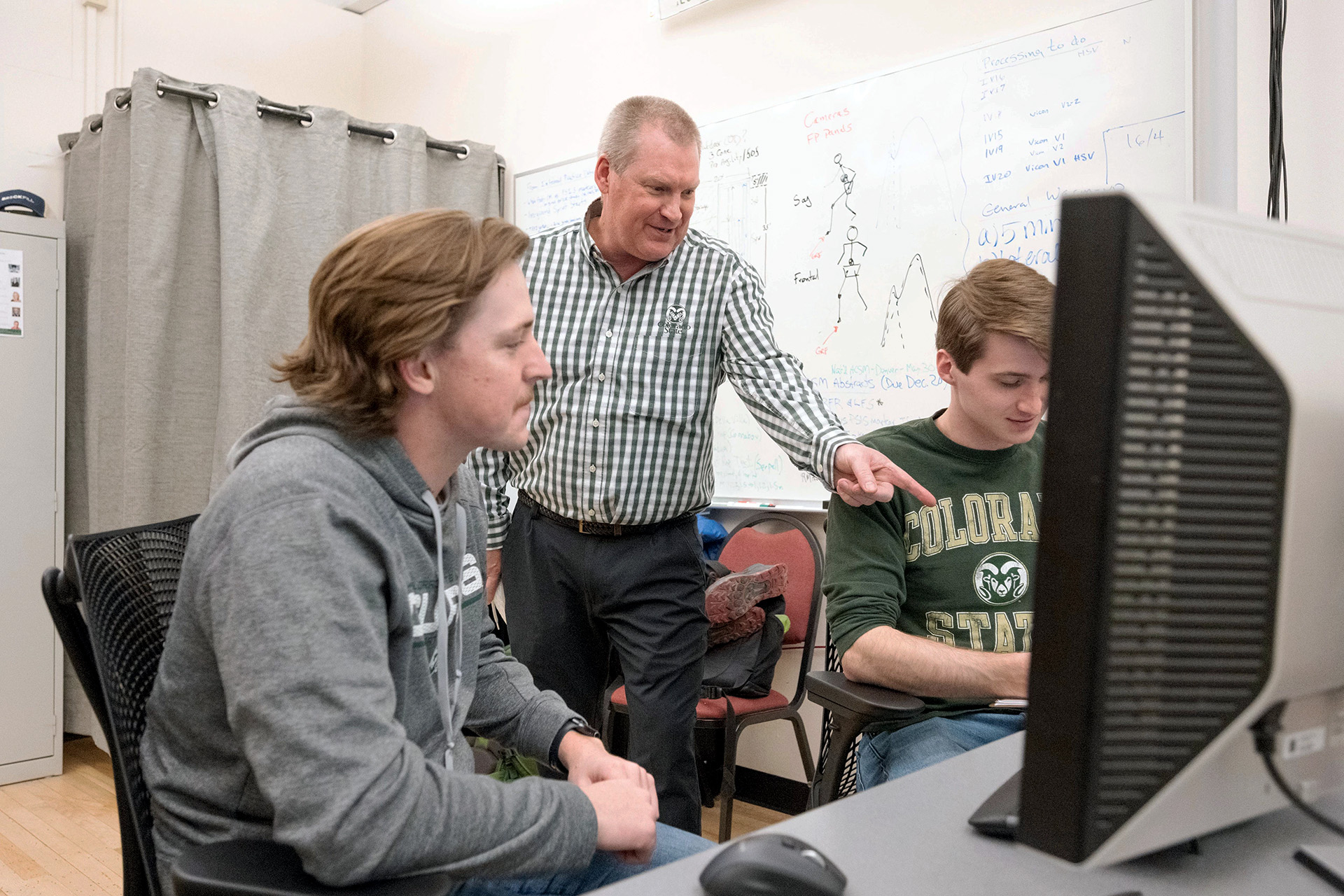
Achilles tendon or anterior cruciate ligament tears are going to happen in the National Football League whether players are on natural grass or artificial turf, but a Colorado State University researcher says playing surfaces can be better.
CSU faculty member Raoul Reiser’s research includes athletes testing grass surfaces via wireless sensor technology and making artificial playing surfaces better and safer.
On Nov. 5, Minnesota Vikings running back Cam Akers tore his Achilles tendon on an artificial turf field in Atlanta. New York Giants quarterback Daniel Jones tore his ACL on a natural grass field in Las Vegas.
Reiser’s Clinical Biomechanics Lab is part of the Human Performance Clinical Research Lab in CSU’s Department of Health and Exercise Science. Reiser also is a core faculty member in CSU’s School of Biomedical Engineering and recently presented a seminar titled, “Artificial Turf – The Good, The Bad & The Ugly.”
Reiser answered questions about the latest high-profile NFL injuries in a season which has seen quarterbacks Aaron Rodgers of the New York Jets and Kirk Cousins of the Minnesota Vikings go down due to non-contact Achilles tears. One of those happened on artificial turf, and one happened on a hybrid field.
What did you notice about the plays in which Akers and Jones were hurt?
Reiser: In both cases, their foot had plenty of traction after ground contact, not visibly moving relative to the ground once achieving a flat foot orientation. This is what you want for high performance, so that you can start, stop, and change direction very quickly. However, it is not always best when trying to prevent injuries.
Akers planted his foot with the ankle highly plantarflexed and knee extended. This position puts significant strain on the Achilles tendon and was made worse with his attempt to stop his momentum and change direction to avoid being tackled. Jones planted his foot with his knee highly extended. This position puts significant strain on the ACL and was also made worse with his attempt to stop his momentum and change direction.
What did you see from replays of the video about the foot/surface interactions?
Reiser: The cleat-surface interaction in both cases was very similar, providing the necessary traction to allow them to accelerate quickly. Unfortunately for both players, the acceleration may have been more than their bodies could handle. It is also highly likely that if these two situations occurred on the alternate type of surface, natural grass instead of artificial turf and vice versa, the outcomes would have been the same.

Is there any way to lessen the number of grass or turf non-contact injuries?
Reiser: There are ways to reduce traction which could then reduce the forces on the athlete and reduce injury risk. However, they are often at the expense of elite performance, (since accelerations are reduced). Typically, when any slipping is noticed during a game the conversation goes to changing the cleats to increase traction. You don’t hear the opposite, but that certainly can be done. Shoe manufacturers have changed stud patterns to reduce the rotational resistance to the foot when cutting and pivoting. This rotational traction is thought to be a significant factor in some knee injuries. However, linear traction, the resistance to straight line sliding of the foot, is still highly desired. Both foot contacts during the injuries in question were associated with linear traction. Changing the cleat-surface interaction can happen, but the desires for elite performance and reducing injury risk require different approaches. Besides choosing appropriate footwear for the surface, athletes can also train in ways to protect themselves. Modifying cutting and pivoting techniques can help reduce the damaging loads to their joints. Training programs can also target appropriate musculature to increase joint resilience.
What about the new grass/turf hybrid surfaces?
Reiser: Hybrid turf is basically a natural grass field with a small amount of artificial turf sewn in. This helps prevent large divots from tearing away. At present only Green Bay and Philadelphia have surfaces of this type. Both are in the middle of the pack as they pertain to musculoskeletal injuries. Other stadiums have tried this hybrid in the past. The artificial fibers can really help maintain the field and playability during extreme rain events. During lesser rain (such as Sunday in Green Bay) slipping is increased as it would on any surface, natural or artificial.
Football is a fast-cutting, violent game; will these injuries always be part of it?
Reiser: Fans want to see elite athleticism from both offensive and defensive players. Unfortunately, this means that violent collisions will happen. Unless the game is significantly altered, hits that result in injuries will remain a part of the game. However, we can reduce the number of unnecessary injuries associated with blocking and tackling. Rule changes have been made to protect players, and I expect these to continue. Additionally, both artificial turf and natural grass fields can be improved. More rigorous testing of surfaces prior to games can drive this, and continued research on the cleat-surface interaction can help improve both the surface and the cleat. (Note: The Las Vegas and Atlanta stadiums – where the two most recent season-ending injuries mentioned above happened – ranked No. 1 and No. 3, respectively, in average injuries from 2017-2022, according to the NFL Players Association)
What is the latest research in CSU’s Clinical Biomechanics Lab?
Reiser: Besides looking at how different infills affect traction and performance, we are also looking at newly available wireless sensor technology for use outside the lab. Very little good data exists on athletes on natural grass, and we also have reason to believe that testing athletes on a large field of artificial turf might offer slightly different results than our small patchwork pieces in the lab. We are also hoping to use results from our current research with athletes to help improve the next generation of mechanical testing devices used on fields.
The Department of Health and Exercise Science is part of CSU’s College of Health and Human Sciences.